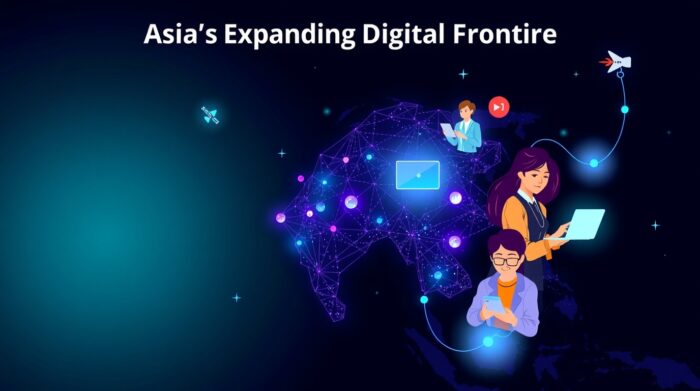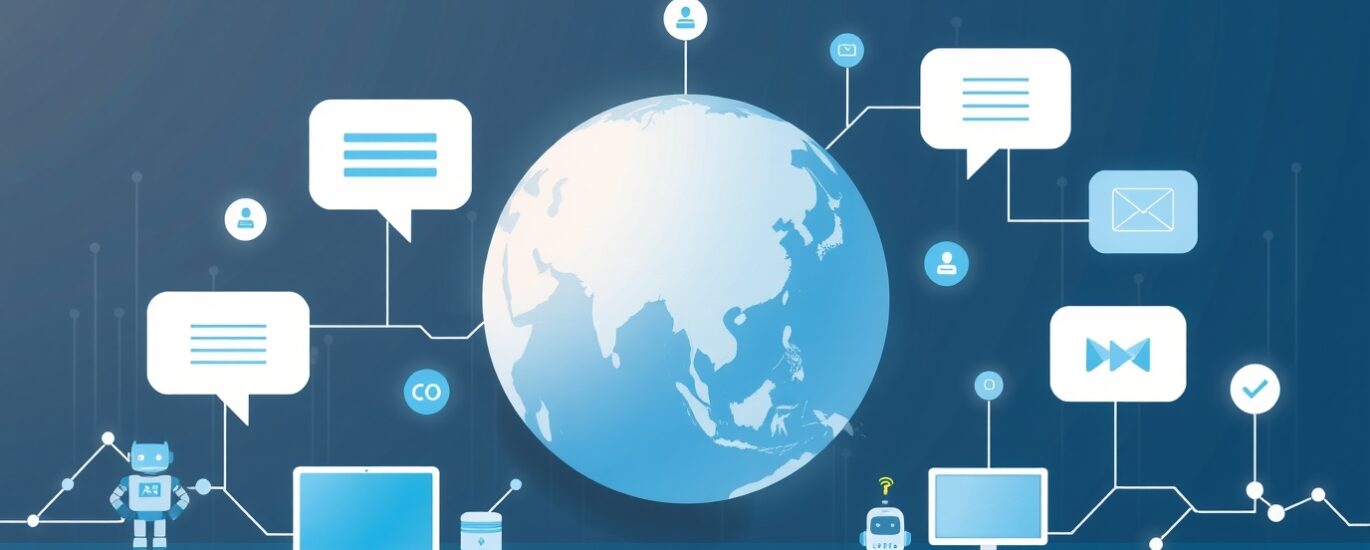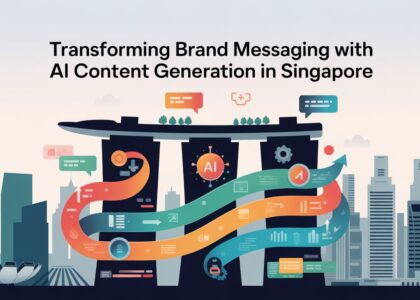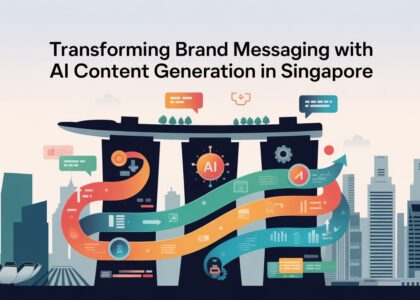The Rise of AI in Asia’s Digital Content Revolution
Asia stands at the heart of the world’s digital transformation, where AI Content Generation is not just a trend but a force redefining communication, creativity, and commerce. Across bustling cities like Singapore, Tokyo, and Seoul, brands are rewriting their digital playbooks to keep pace with audiences who expect fast, relevant, and emotionally intelligent content.
The rise of artificial intelligence has reshaped how content is created, localized, and distributed. From chatbots that understand cultural nuances to automated storytelling systems, Asia’s digital growth story is powered by a new wave of AI-driven innovation. According to McKinsey’s report on AI adoption in Asia, over 60% of leading companies in the region are already investing in machine learning technologies to enhance engagement and productivity.
Yet, this isn’t just about automation — it’s about amplification. With AI Content Generation, businesses can scale ideas into multiple languages, tailor messages to diverse audiences, and build authenticity across borders. This technology transforms raw data into digital narratives that resonate, connect, and convert.
As Asia’s economies surge forward, one truth is clear: the companies that master AI-driven creativity will shape the next chapter of the continent’s digital evolution.

Inside the Machine: How AI Content Generation Works
At its core, AI Content Generation is powered by algorithms that mimic human creativity through a combination of natural language processing (NLP), machine learning, and deep neural networks. Platforms like OpenAI and Google DeepMind have paved the way for tools that can write, analyze, and even predict what audiences want to read.
These systems digest vast amounts of data — cultural patterns, search intent, sentiment, and syntax — to create content that sounds human, feels relevant, and performs exceptionally well across search engines. The results? Instant blog posts, marketing campaigns, and product descriptions that align perfectly with brand tone and market trends.
In regions as linguistically rich as Asia, this technology goes beyond translation. It interprets context, ensuring that content for a Thai audience feels as natural as it does for a Korean or Indian reader. The brilliance lies not in replacing human writers but in empowering them. AI acts as the creative catalyst — a silent partner that accelerates ideation.
As more brands integrate tools like Jasper AI and Grammarly Business into their workflows, the efficiency gap between traditional and AI-enhanced teams continues to widen. This is the frontier where data meets storytelling, and speed meets substance.

Asia’s Expanding Digital Frontier
The digital heartbeat of Asia is pulsing faster than ever. With over 2.5 billion active internet users across the continent, the demand for dynamic, multilingual, and personalized content has never been higher. Platforms such as Statista’s digital insights reveal that countries like Indonesia, Vietnam, and the Philippines are experiencing exponential growth in online engagement.
However, diversity remains both Asia’s strength and its biggest challenge. Each market has unique linguistic, cultural, and behavioral nuances. Here’s where AI Content Generation becomes indispensable — helping brands navigate complexity with precision.
Instead of translating a campaign word-for-word, AI tailors it for cultural authenticity. For instance, a festive campaign in Malaysia might emphasize family unity, while the same theme in Japan would lean on tradition and subtlety.
By using tools that analyze regional trends in real time — like HubSpot’s content intelligence platform — companies can identify what resonates across borders. The payoff? A truly Asia-wide digital presence that’s consistent, credible, and compelling.
This new era belongs to those who can merge human insight with machine precision — a partnership driving Asia’s online dominance.

Bridging Language and Cultural Gaps with AI
Asia is a mosaic of more than 2,300 languages, countless dialects, and cultural layers that defy one-size-fits-all messaging. Traditional translation tools can’t capture the subtleties of tone, humor, or cultural idioms — but AI Content Generation can.
AI models trained on regional data learn to adapt tone and phrasing to local sensibilities. For example, a product description written for the Thai market might emphasize emotional connection, while one for Singapore might highlight efficiency and innovation. This isn’t guesswork — it’s the science of cultural intelligence powered by data.
Platforms like DeepL Translator and Google Cloud Translation AI have redefined what “localization” means. By pairing them with content engines, brands can craft copy that feels native, not translated.
For multinational corporations eyeing Asia’s growth, this capability bridges gaps that used to take months of manual localization. It ensures messaging isn’t just understood — it’s felt. That’s the real power of AI-driven communication in a continent built on diversity.

Lessons from Leaders: Asian Brands Winning with AI
From Singapore to Seoul, forward-thinking brands are already turning AI Content Generation into a strategic asset. Take Shopee, for instance — its AI-based localization ensures every user sees regionally relevant promotions and tone-adjusted messaging. Similarly, Grab uses AI-driven content personalization to refine its in-app communication, tailoring messages based on user behavior and cultural context.
In Japan, Rakuten has adopted automated content creation for e-commerce listings, while India’s Zomato uses AI-powered sentiment analysis to align its tone with user expectations. These success stories highlight a common thread — AI enhances human creativity rather than replacing it.
Research from PwC shows that brands leveraging AI tools outperform competitors by up to 20% in engagement metrics. The synergy of human expertise and machine precision is redefining digital storytelling.
These pioneers are proving that AI, when used ethically and strategically, isn’t a gimmick — it’s a growth multiplier.

Navigating the Ethics: Balancing Power and Responsibility
As with all revolutions, the AI wave brings both progress and peril. While AI Content Generation unlocks immense creative potential, it also raises questions about authorship, data privacy, and bias.
The challenge lies in balancing automation with accountability. Tools trained on biased data can inadvertently perpetuate stereotypes or cultural inaccuracies. That’s why responsible use — guided by frameworks like OECD’s AI Principles and UNESCO’s AI ethics guidelines — is crucial.
Transparency and human oversight remain non-negotiable. Brands that integrate ethical AI practices not only mitigate risks but also build long-term trust. In an era where authenticity is currency, audiences reward brands that use technology to enhance — not exploit — communication.
AI is only as ethical as the intent behind its use. Those who understand this principle will lead the next wave of credible digital transformation.

The Future is Now: AI and the Next Era of Asian Content
The future of Asia’s content ecosystem will be autonomous, multilingual, and hyper-personalized. With advancements in voice AI, generative video, and real-time translation, the next frontier of AI Content Generation will blur the lines between human creativity and machine intelligence.
Emerging startups are already building AI-powered media ecosystems, capable of generating entire campaigns in multiple languages with localized storytelling baked in. Tech in Asia and Nikkei Asia report that AI investments in content technology are projected to surpass $15 billion in the next five years.
Soon, brands will not only communicate to Asia but from Asia — powered by homegrown AI that understands its people, languages, and aspirations.
Conclusion: Empowering a Connected Asia Through AI
The story of Asia’s digital rise is far from over — it’s accelerating. With AI Content Generation at the core, brands are no longer constrained by language, geography, or scale. They’re building narratives that cross borders and connect billions.
What once required massive teams and timelines can now be achieved with precision, agility, and intelligence. This is not the end of human creativity — it’s its renaissance, amplified by technology.
In the hands of forward-thinking brands, AI becomes more than a tool; it becomes a bridge — uniting Asia’s diverse voices into a single, powerful digital chorus.





